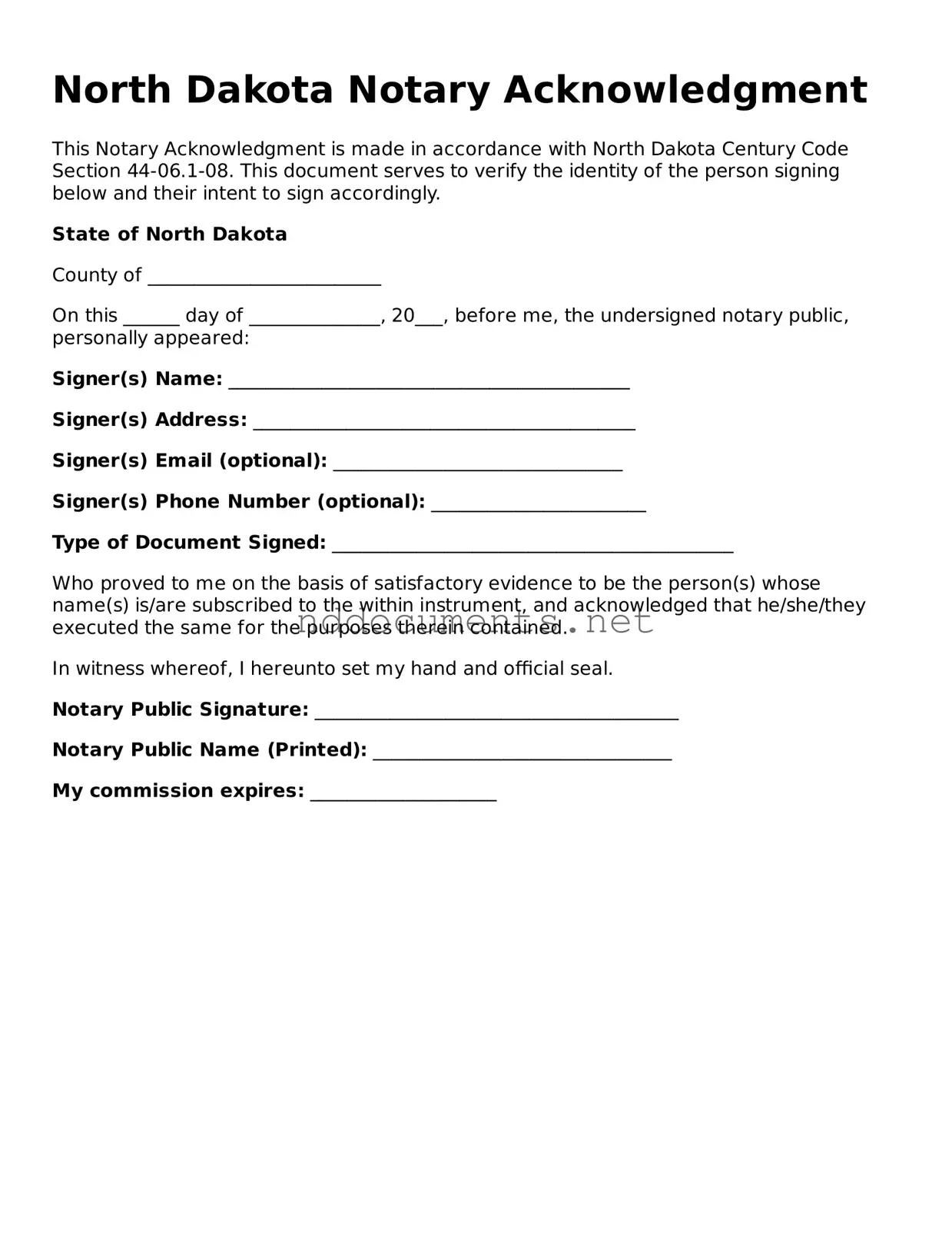The North Dakota Notary Acknowledgement form serves as a crucial document in the realm of legal transactions, ensuring that signatures on various documents are verified and authenticated. This form plays a significant role in establishing the identity of the signer, thereby providing assurance that the individual willingly and knowingly executed the document in question. Typically, the form requires the presence of a notary public, who will observe the signing process and then affix their official seal to confirm the act. In addition to the notary's signature and seal, the form also captures essential details, such as the date of acknowledgment and the location where the signing occurs. By utilizing this form, individuals can enhance the credibility of their documents, which can be particularly important in matters such as property transactions, legal agreements, and other formal arrangements that may require verification. Understanding the components and significance of the North Dakota Notary Acknowledgement form can empower individuals to navigate their legal obligations with greater confidence and clarity.
